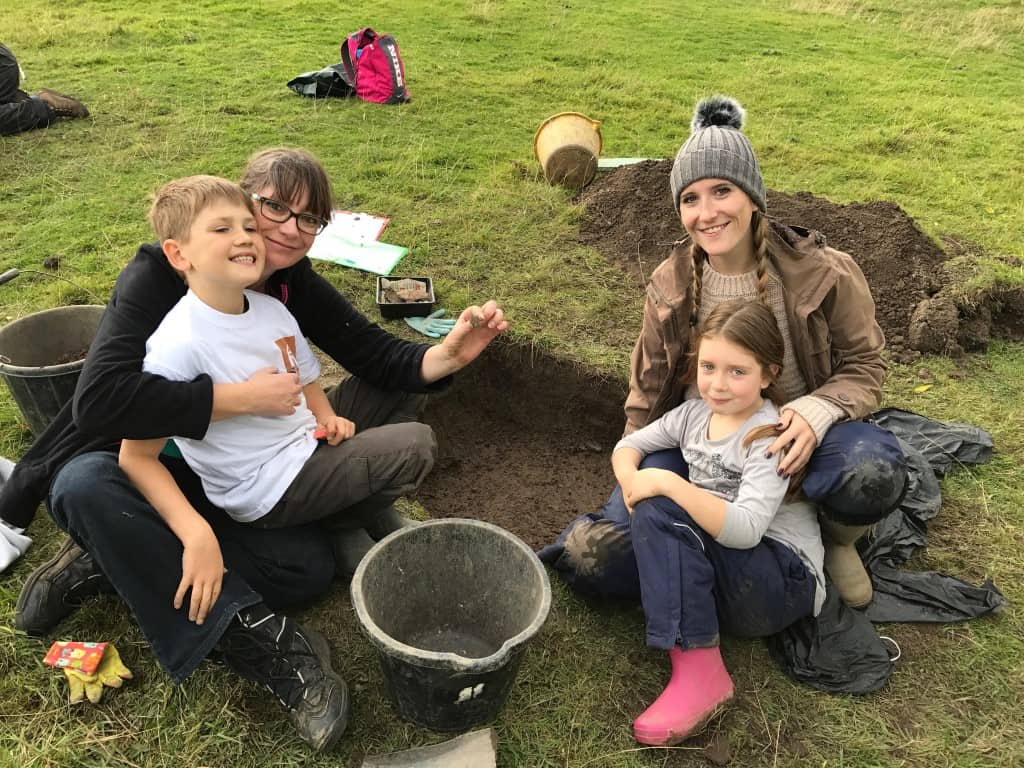| In the field between Holy Mire bastle and the Roman fort we were also looking for evidence to see whether we had a Roman Army parade ground on site. In the photo below, the people are standing on the possible ‘tribunal’ – the raised mound where the commanding officer could have stood with the wind at his back to carry his voice. The fort is the hill behind them and Holy Mire bastle is in the centre of the picture. The puddle to the far right is the outer ditch of the possible ‘parade ground’, with the bank running parallel to its left. The photo is taken looking east. 
The flat area covered with rushes, on both sides of the track, roughly corresponds to the rectangular feature on the aerial photo that we are investigating, although it stretches beyond Holy Mire towards the Roman Road. 
Excerpt taken from the English Heritage Report: ‘An Archaeological Investigation into the Roman Fort and its setting’
Several test pits were dug in this area, including one which seemed to have a definite paved surface, with sandstones set flat onto the natural clay below. This, coupled with the definite bank and ditch we found in the 8m x 1m trench, seems to be enough evidence for Dr Rob. 
In this trench we found a beautiful mesolithic (Middle Stone Age) flint which shows just how long people have been in the landscape here at Epiacum.
 Here Dr Rob sums up the week, explaining what we found, and tells us all about the next steps for his post-excavation work. | 